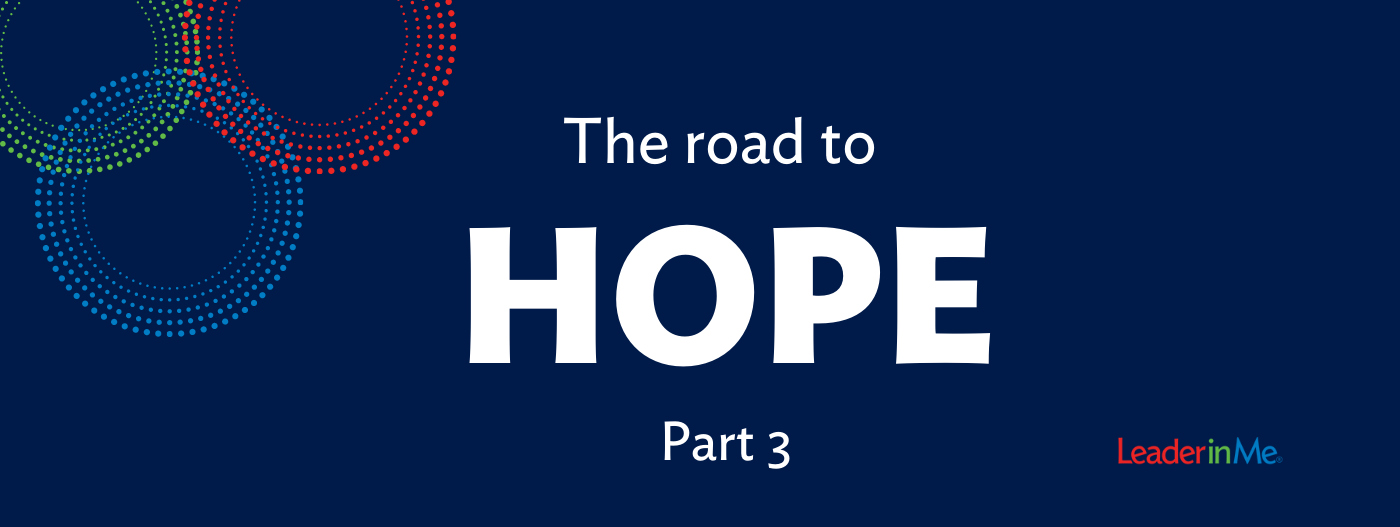The Road to Hope Recovery Part 3
Author: Dr. Eve Miller
January 24, 2022

HOPE BUILDING ACTIVITY: VISIONING EXERCISE
Applying the three components of hope to our own lives.
This blog is part of a series on hope. You can find the first part here and the second part here.
Decades of research support the finding that you can increase your levels of hope when you know what it is and how to build your ability to use it.
Perhaps the largest barrier we face in sustaining hope is apathy. Just as hope can be learned and practiced, so too can apathy. Both emerge out of our response to hardship and setbacks. What distinguishes apathy and hope? The belief in our ability to create a future outcome that is better than today. When we feel apathetic, we see dead ends up ahead. When we feel hopeful, we see a way around them.
This is an important distinction to make right now because of the prolonged stress so many have been experiencing. Stress distorts how we think about the future. Uncertainty minimizes our feelings of personal agency. The past two years have been unrelenting in both stress and uncertainty. It is no wonder so many of us feel the numbness and depression of apathy.
Research tells us that the unconscious thoughts and behaviors of apathy can be overcome with the deliberate exercise of hope. One of the most powerful exercises to build hope is to visualize our future as better than today. This simple exercise activates neural circuits in the brain like installing a light in a dark hall—it allows the brain to take that route in the future because it can better see how to use it. I strongly encourage you to do this exercise and do it often.
WHY VISUALIZATION: Visualization exercises are powerful and will give as much as you give. They are effective elements of hope interventions for:
|
HOW DOES IT WORK: Visualization exercises are also simple.
You can either:
Before you begin, take a few deep breaths and feel the calm energy of focused attention. |
Start by thinking of a goal you want to reach in the next five years
Maybe your goal is to run a race, own a new home, improve a relationship, go on a bucket-list vacation, go back to school, or something else that is personally meaningful.
Choose one specific goal.
Think about some things you would need to do to reach your goal within the next five years.
You can keep it pretty general, but this exercise is most powerful when you get specific. What would it look like to be halfway to your goal? How would you be feeling about that progress? What barriers might get in the way? Imagine that barrier and then what you do to overcome it successfully.
Now imagine you are five years in the future, and you have accomplished this goal.
How has your life changed?
Really take it in with as much detail as you can. Imagine what is happening around you. Who is with you?
Now think about what you feel.
Do you feel happy? Proud? Calm? Brave? Healthy? Accomplished?
What insights did you gain? Did it make you feel hopeful?
As you look at the three components of hope in the table below, how did these show up in what you visualized?
The Components of Hope
| Goals: picking your desired destination Highly hopeful people are goal-minded and are actively pursuing a goal that is personally meaningful to them. |
Pathways: using the roadmap to select and track progress to your destination Highly hopeful people can see many pathways to their goal. They use the roadmaps of these pathways to track their progress and grow their feeling of hope as they get closer to their destination. |
Agency: the fuel you need to start and continue the path to your destination Highly hopeful people are motivated to start on a path, and they have the willpower to keep going. They know there will be challenges, and they feel capable of handling the challenges when they come. |
The power of this exercise comes through what you can imagine in your future – and sometimes what you cannot imagine.
When I first tried this exercise, I became aware that I was not thinking about the future like I used to. I had learned to cope with COVID-19 in a survival mode that made it hard to think further than a month, sometimes even a week, into the future. I could see how apathy had taken over parts of my life that used to bring me the greatest joy. I recognize we do not have equal roads back to hope, nor are the barriers the same. I also know that hope is felt most deeply by those who have risen out of the darkest experiences and circumstances. It is not for some people, it is for all of us—When you are ready, hope will be there inside of you, ready to come alive again.
Share Article on
Tags: burnout, COVID, education, empathy, family, goal setting, hope, Leader, leadership strategies, parents, perseverance, principal, sel, trauma, wellness-leadership
